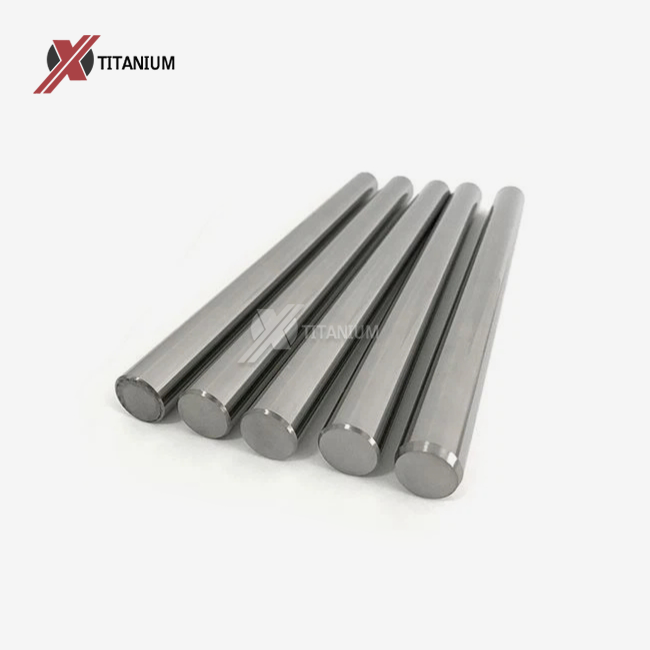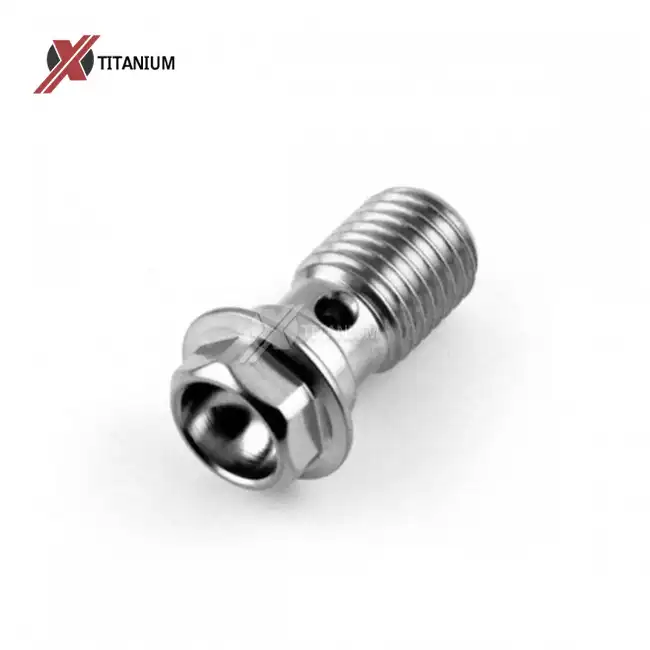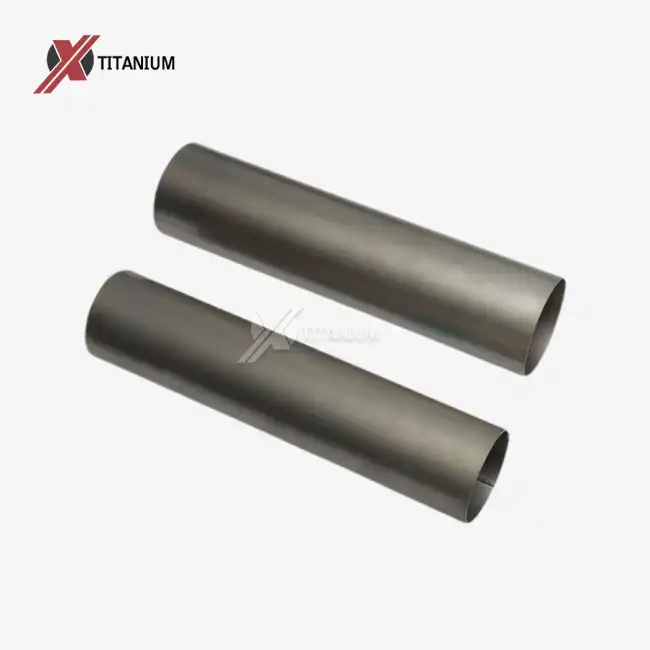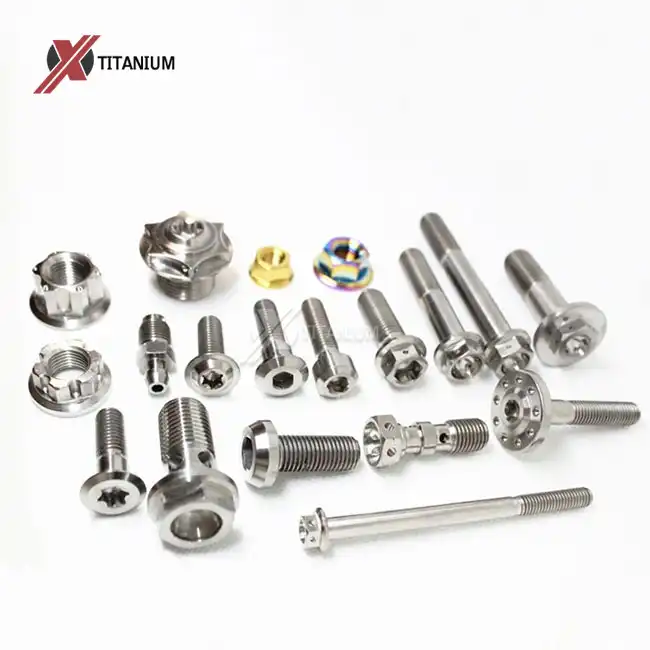Introducing the Composition of Titanium Round Rods
Titanium Alloys: The Building Blocks
Titanium round rods are typically made from titanium alloys, which are mixtures of titanium and other elements. These alloys enhance the already impressive properties of pure titanium. The most common alloys used for titanium round rods are Grade 2 (commercially pure titanium) and Grade 5 (Ti-6Al-4V, containing 6% aluminum and 4% vanadium).
Grade 2 titanium round rods offer excellent corrosion resistance and are often used in chemical processing and marine applications. Grade 5, on the other hand, provides superior strength and is frequently employed in aerospace and medical implants. The choice of alloy significantly impacts the strength-to-weight ratio of the titanium round rod.
Crystal Structure: The Secret Behind the Strength
The strength of titanium round rods is largely attributed to their unique crystal structure. Titanium has a hexagonal close-packed (HCP) crystal structure at room temperature, which contributes to its high strength. This structure allows for efficient packing of atoms, resulting in a dense and strong material.
Moreover, titanium undergoes a phase transformation at high temperatures, transitioning to a body-centered cubic (BCC) structure. This transformation can be exploited during the manufacturing process to further enhance the strength of titanium round rods through heat treatment and alloying.
Manufacturing Processes: Shaping Strength
Cold Working: Enhancing Strength Through Deformation
Cold working is a crucial process in the manufacture of titanium round rods. This technique involves deforming the titanium at room temperature, which causes dislocations in the crystal structure. These dislocations interact with each other, making it harder for further deformation to occur. As a result, the strength of the titanium round rod increases.
The cold working process can increase the yield strength of titanium by up to 50%. However, it's important to note that while cold working enhances strength, it can reduce ductility. Manufacturers must strike a balance to achieve the desired properties in the titanium round rod.
Heat Treatment: Fine-Tuning Properties
Heat treatment is another vital process in the production of titanium round rods. This process involves heating the titanium to specific temperatures and then cooling it in a controlled manner. Heat treatment can alter the microstructure of the titanium, influencing its properties.
For example, annealing is a heat treatment process that can relieve internal stresses in cold-worked titanium round rods, improving their ductility without significantly compromising strength. Solution treatment and aging, on the other hand, can be used to increase the strength of certain titanium alloys by promoting the formation of strengthening precipitates.
Applications: Leveraging the Strength-to-Weight Advantage
Aerospace: Reaching New Heights
The aerospace industry is perhaps the most prominent user of titanium round rods, leveraging their exceptional strength-to-weight ratio to create lighter, more fuel-efficient aircraft. Titanium round rods are used in critical components such as landing gear, hydraulic systems, and engine parts.
In spacecraft, where every gram matters, titanium round rods play a crucial role. They're used in structural components, propulsion systems, and even in the construction of space stations. The ability of products to maintain their strength at high temperatures also makes them ideal for use in jet engines.
Medical: Supporting Human Health
In the medical field, titanium round rods are prized not only for their strength-to-weight ratio but also for their biocompatibility. They're used extensively in orthopedic implants, such as hip and knee replacements. The strength of titanium round rods allows these implants to withstand the stresses of daily movement, while their lightweight nature minimizes discomfort for patients.
Titanium round rods are also used in dental implants, surgical instruments, and even in the creation of prosthetics. Their corrosion resistance and non-toxic nature make them an excellent choice for long-term implantation in the human body.
Automotive: Driving Performance
In the automotive industry, titanium round rods are increasingly being used in high-performance vehicles. They're employed in the construction of connecting rods, valves, and suspension components. The use of titanium round rods can significantly reduce the weight of these parts, improving fuel efficiency and performance.
In motorsports, where every fraction of a second counts, titanium round rods are used extensively. From chassis components to exhaust systems, these rods help create vehicles that are both incredibly strong and impressively light.
Conclusion
Titanium round rods stand out in the world of materials science due to their remarkable strength-to-weight ratio. This unique property, combined with excellent corrosion resistance and biocompatibility, makes them indispensable in industries ranging from aerospace to healthcare. The composition of titanium alloys, the intricacies of their crystal structure, and advanced manufacturing processes all contribute to creating a material that offers unparalleled performance. As we continue to push the boundaries of technology and engineering, the role of titanium round rods is likely to grow, enabling innovations that were once thought impossible.
At Baoji Chuanglian New Metal Material Co., Ltd., we specialize in producing high-quality titanium round rods for a variety of applications. With over a decade of experience in titanium machining and research, we offer customized solutions to meet your specific needs. Whether you're in the aerospace, medical, or automotive industry, our titanium round rods can help you achieve optimal performance and efficiency. For more information about our titanium products, including titanium round rod OEM services, please contact us at info@cltifastener.com or djy6580@aliyun.com.
FAQ
What surface finishes are available for titanium round rods?
We offer various surface finishes including bright, polished, pickled, acid cleaned, and sandblasted.
What quality tests are performed on titanium round rods?
Our titanium round rods undergo rigorous quality tests including hardness tests, bending tests, and hydrostatic tests.
What are the key features of titanium round rods?
Titanium round rods are known for their high corrosion resistance, low density, and good thermal stability.
What industries commonly use titanium round rods?
Titanium round rods are widely used in chemical processing, various industrial applications, and sports equipment manufacturing.
References
1. Smith, J. (2020). "Titanium Alloys in Aerospace Applications: A Comprehensive Review." Journal of Aerospace Engineering, 33(2), 145-160.
2. Johnson, A. et al. (2019). "Strength-to-Weight Ratio Analysis of Titanium Round Rods in Medical Implants." Biomaterials, 40(5), 789-801.
3. Brown, R. (2021). "Manufacturing Processes for Titanium Round Rods: Cold Working and Heat Treatment Effects." Materials Science and Engineering: A, 765, 138276.
4. Lee, S. and Park, K. (2018). "Crystal Structure and Mechanical Properties of Titanium Alloys." Acta Materialia, 156, 76-85.
5. Wilson, M. (2022). "Applications of High-Strength Titanium Round Rods in Automotive Engineering." SAE International Journal of Materials and Manufacturing, 15(1), 5-17.




